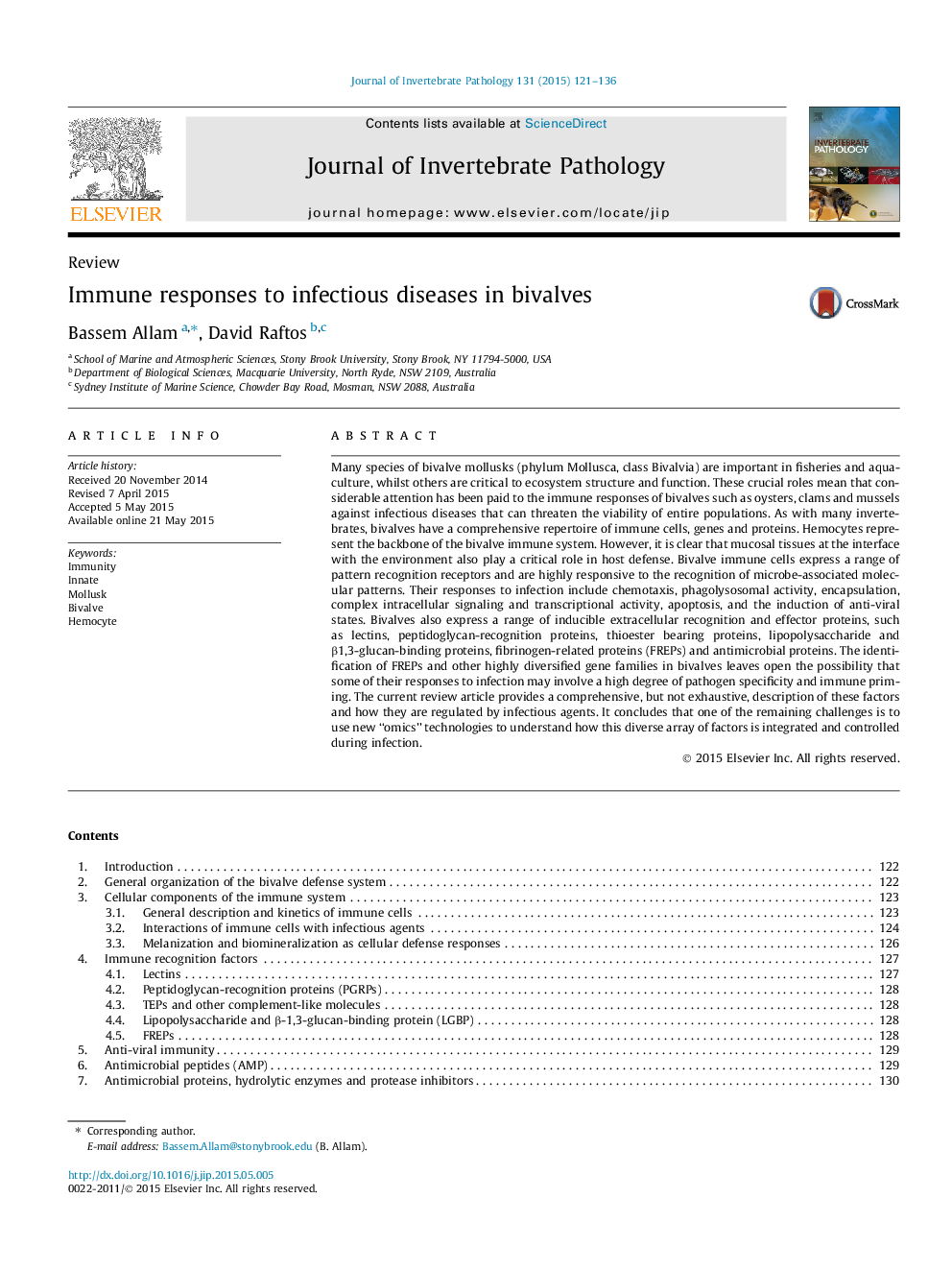| کد مقاله | کد نشریه | سال انتشار | مقاله انگلیسی | نسخه تمام متن |
|---|---|---|---|---|
| 4557536 | 1628221 | 2015 | 16 صفحه PDF | دانلود رایگان |
Many species of bivalve mollusks (phylum Mollusca, class Bivalvia) are important in fisheries and aquaculture, whilst others are critical to ecosystem structure and function. These crucial roles mean that considerable attention has been paid to the immune responses of bivalves such as oysters, clams and mussels against infectious diseases that can threaten the viability of entire populations. As with many invertebrates, bivalves have a comprehensive repertoire of immune cells, genes and proteins. Hemocytes represent the backbone of the bivalve immune system. However, it is clear that mucosal tissues at the interface with the environment also play a critical role in host defense. Bivalve immune cells express a range of pattern recognition receptors and are highly responsive to the recognition of microbe-associated molecular patterns. Their responses to infection include chemotaxis, phagolysosomal activity, encapsulation, complex intracellular signaling and transcriptional activity, apoptosis, and the induction of anti-viral states. Bivalves also express a range of inducible extracellular recognition and effector proteins, such as lectins, peptidoglycan-recognition proteins, thioester bearing proteins, lipopolysaccharide and β1,3-glucan-binding proteins, fibrinogen-related proteins (FREPs) and antimicrobial proteins. The identification of FREPs and other highly diversified gene families in bivalves leaves open the possibility that some of their responses to infection may involve a high degree of pathogen specificity and immune priming. The current review article provides a comprehensive, but not exhaustive, description of these factors and how they are regulated by infectious agents. It concludes that one of the remaining challenges is to use new “omics” technologies to understand how this diverse array of factors is integrated and controlled during infection.
Figure optionsDownload as PowerPoint slide
Journal: Journal of Invertebrate Pathology - Volume 131, October 2015, Pages 121–136
